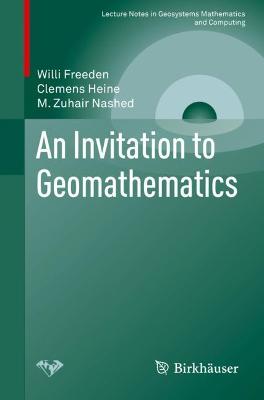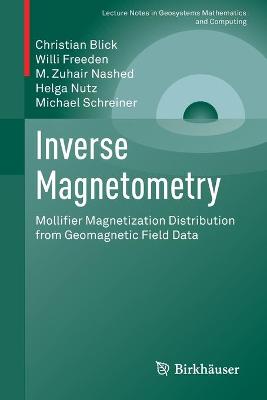Lecture Notes in Geosystems Mathematics and Computing
2 total works
An Invitation to Geomathematics
by Willi Freeden, Clemens Heine, and M. Zuhair Nashed
The authors introduce geomathematics as an active research area to a wider audience.
Chapter 1 presents an introduction to the Earth as a system to apply scientific methods. Emphasis is laid on transfers from virtual models to reality and vice versa.
In the second chapter geomathematics is introduced as a new scientific area which nevertheless has its roots in antiquity. The modern conception of geomathematics is outlined from different points of view and its challenging nature is described as well as its interdisciplinarity. Geomathematics is shown as the bridge between the real world and the virtual world. The complex mathematical tools are shown from a variety of fields necessary to tackle geoscientific problems in the mathematical language.
Chapter 3 contains some exemplary applications as novel exploration methods. Particular importance is laid on the change of language when it comes to translate measurements to mathematical models. New solution methods like the multiscale mollifier technique are presented. Further applications discussed are aspects of reflection seismics.
Chapter 4 is devoted to the short description of recent activities in geomathematics.The Appendix (Chapter 5) is devoted to the GEM - International Journal on Geomathematics founded ten years ago. Besides a detailed structural analysis of the editorial goals an index of all papers published in former issues is given.
Inverse Magnetometry
by Christian Blick, Willi Freeden, M. Zuhair Nashed, Helga Nutz, and Michael Schreiner
Potential data sets primarily of terrestrial origin constitute the main data basis in the book. For deep geology, the geomathematical decorrelation methods are designed in such a way that depth information (e.g., in boreholes) may be canonically entered.
Overall, this book provides pioneering and ground-breaking innovative mathematical knowledge as a transfer methodology from the "reality space" of magnetometric measurements into the "virtual space" of mathematical-numerical modeling structures and mollifier solutions with novel geological application areas. It pursues a double goal: On the one hand, it represents a geoscientific set of rules for today's geoengineering, interested in the application of innovative modelling and simulation techniques to promising data sets and structures occurring in geomagnetics. On the other hand, the book serves as a collection of current material in Applied Mathematics to offer alternative methodologies in the theory of inverse problems.

